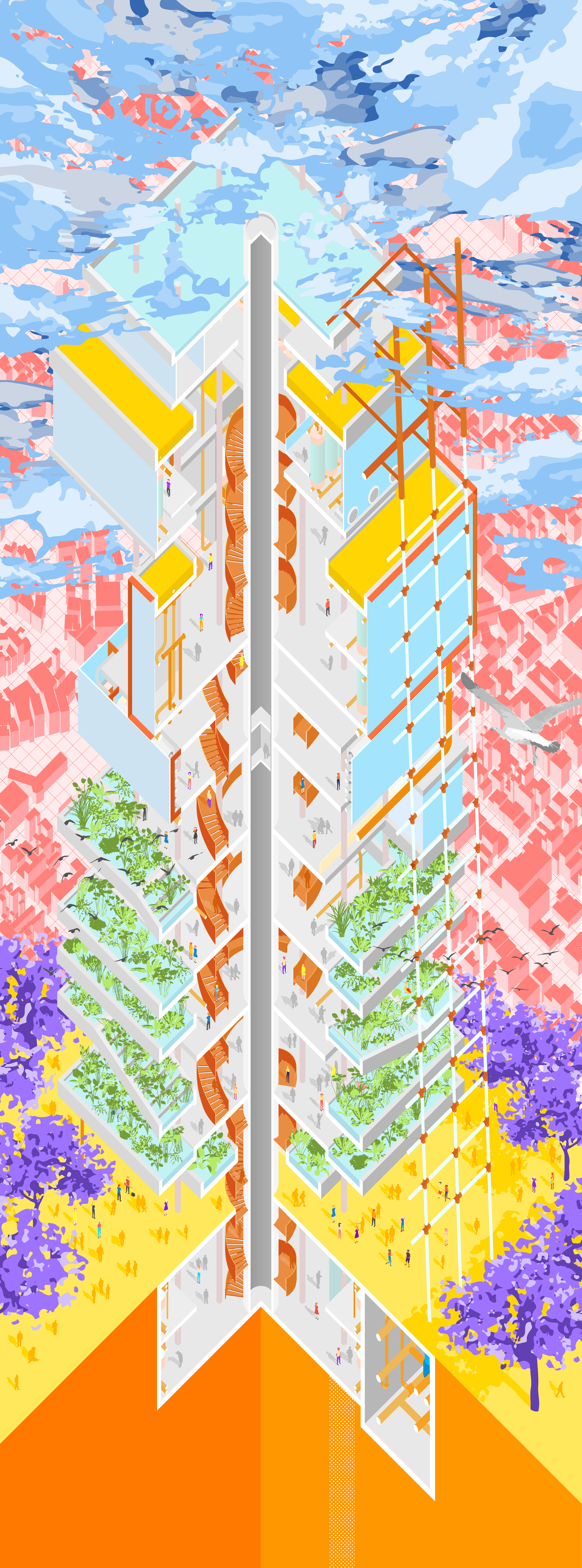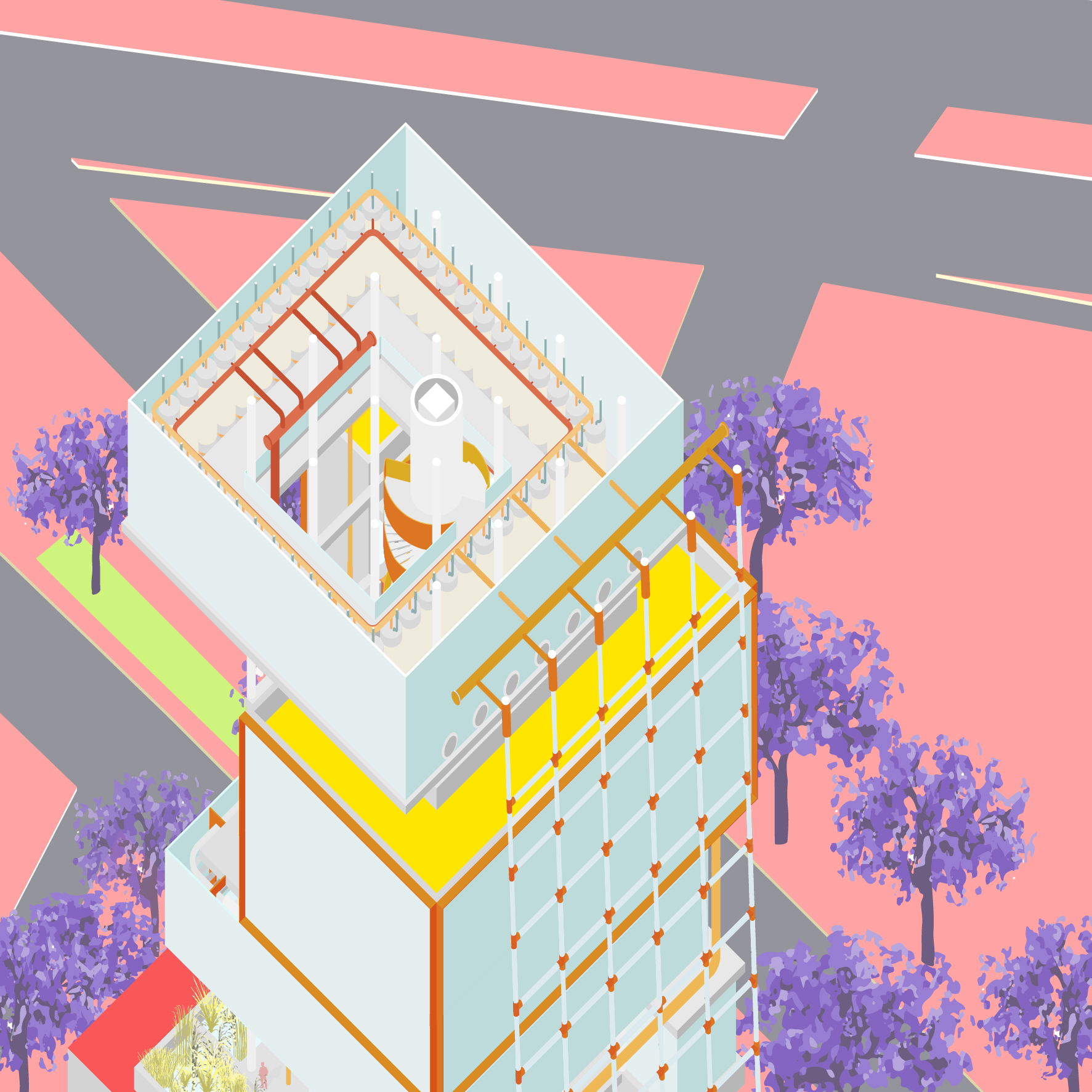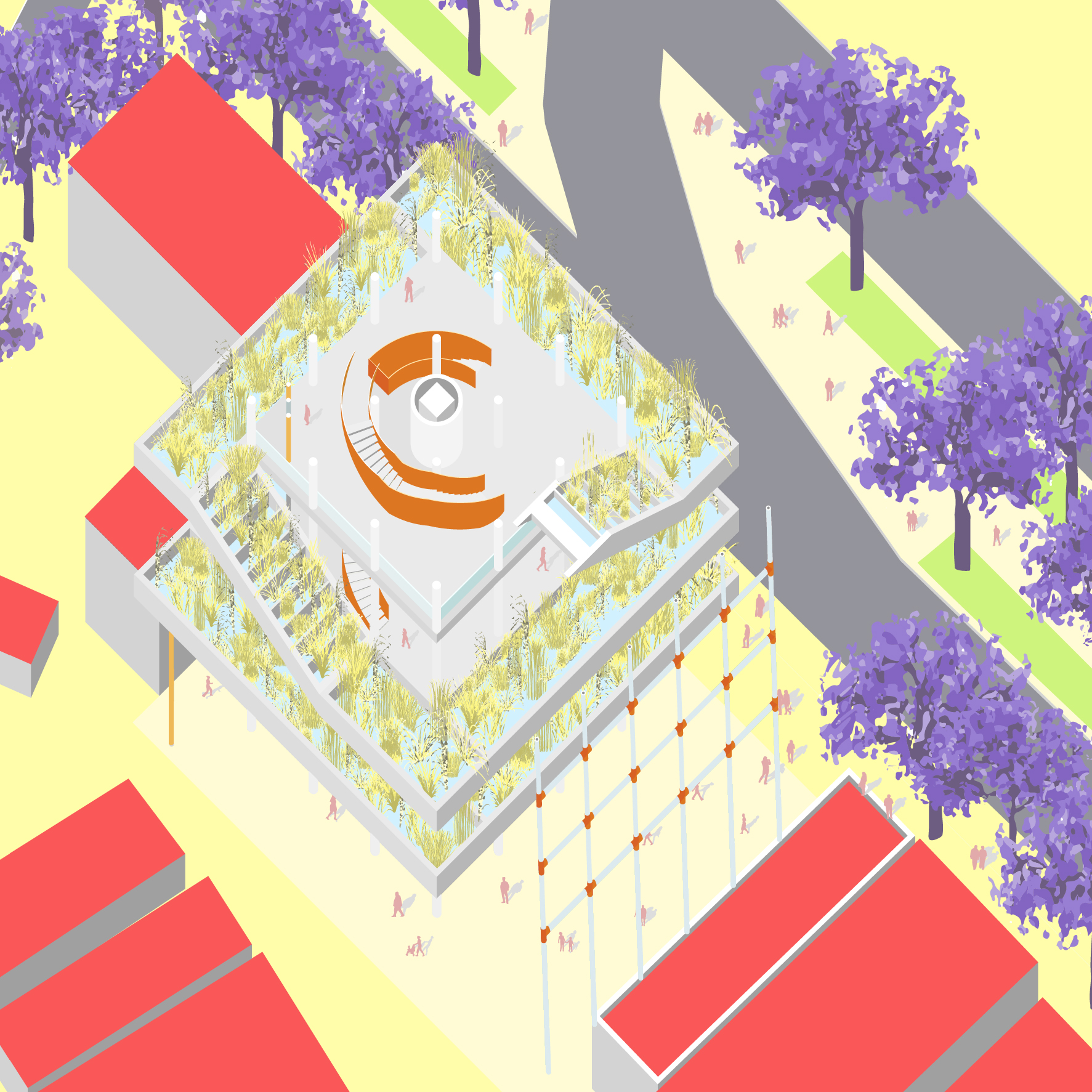Alternative Memories of Pre-existence
Chapter I – Memories of Pre-existence: Lost in The(Mexico) City
After years of over-exploitation of aquifers and delayed recharge, Mexico City has been sinking as a result of land subsidence. Inequality of water distribution seasonally and territorially causes conflicts on the right to water that becomes a financial threat and political bargaining chip. Insufficient maintenance in the buried piped network leads to unsatisfactory sanitary levels, while some parts of the City have no access to the domestic water supply. Short capacity in the sewage system causes yearly flooding in Mexico City. The lack of treatment plants leaves wastewater to be discharged directly to farming lands and neighbour states...
Mexico City was once a lake, the Lake Texcoco, which once covered an area of 2,100 square miles before the existence of Mexico City. Today, the lake has been turned into one of the most densely built urban sprawl with more than 8 million people within its territorial boundary and 12 million on the outskirts, together forming the metropolitan area. The poorly developed water management system, or there is no system, has resulted in a consequential crisis, conflicts and injustice in the water cycle.
The nature of the lakebed that supports the City is formed by layers of volcanic ashes, clay, and highly permeable sand and gravel that easily compresses when fluid is withdrawn, making quakes’ effects quite extreme.
Avenida Alvaro Obregon 286, was once a seven stories office block. At 13:14 CDT on 19 September 2017, the Central Mexico Earthquake struck. Three hundred seventy people were killed by the earthquake, including 228 in Mexico City, while 49 were found on the collapsed site of Avenida Alvaro Obregon 286. More than 40 buildings fell down. Most of these collapsed buildings sat and marked the pre-existence of the Lake Texcoco. On the same date, 32 years ago, the 1985 Mexico City earthquake struck in the early morning at 07:17:50 CST and caused colossal damage and the death of more than 5,000 people.
Mexico City set itself in the cycle of traps that we initially fight with the nature by draining the lake at the very beginning, followed by loss of nature with no access to fresh water, and then we battle for nature by taking over other’s right to water, and now we got hit by the nature.

The Map and loophole of the Pre-existence












The Fragments
Chapter II – Pause: A fantastic lake and where to find it (back)?
The water cycle was meant to be a loop and make itself a type of renewable resource. However, in Mexico City, we see a big hole in the loop that water will not be retained, and Mexico City is always thirsty. And all these conflicts and crises were generated from the drainage of Lake Texcoco.
At the planetary level, Cities like Mexico City tend to grow further, and land resources within the densely built urban area become more and more valuable. Lands that are home to natural habitats and ecologies are being turned into man-made artefacts where the balance of the nature, such as the carbon cycle, is also being broken down. We take over the land, we build structures on it, and it’s a non-revertible move to the environment. In the conflicts between us and the nature, is there a way we can be together, or at least try to maintain a certain level of balance to keep the environmental cycles running alongside humanity?
And when we zoom into the urban scale, man-made boundaries for accessing resources create classification, then conflicts between classes resulting in demand and supply. For instance, the water consumption minimum in Mexico City is divided by social classes occurs as: in some illegal establishments; it is around 28 l/p/day (litres per person per day), and the consumption estimation average in the sectors of medium income is between 275 to 410 l/p/day and in the sectors of maximum income is between 800 and 1000 l/p/day. How can infrastructure better ease the gaps between different social classes and bind the community together?
Chapter III – Alternative Memories of Pre-existence: Reconstruction of Ecological Integrity
Based on the series of collective memories found around the water issues in Mexico City, the project will run as an alternative way to treat water infrastructure that is usually shielded and isolated from the urban set-out and community. The site of Avenida Alvaro Obregon 286 in the earthquake with the loss of 49 lives was expropriated by the government of CDMX and planned to be a memorial park. Deviating from the traditional way where a memorial is in the form of still life, I am proposing an active “memorial” where running water is used as the medium in the remembrance of the loss of lives as well as the loss of balance between human and nature. It’s been a long battle for space for humanity and space for the nature. More ‘world’s largest infrastructures’ are being built in Mexico, and turning lands for natural habitation into only-for-human use. My proposal is an alternative plan for the formal programme – a wastewater treatment plant and groundwater injection station to be placed in the city centre, which may also create space for informal gathering and eliminates the boundary between infrastructure (a place), natural ecologies (a place-used-to-be) and public realm (a place-to-be).
In traditional wastewater treatment plants, all processes seem flat and planar. Behind the scene, energy is used by pumps at certain stages to prevent water goes too deep, so the plant can spread out nicely on acres of land, and is usually fenced. Land resources in Mexico City are limited, and they have to place these core civil infrastructures outside the border and beside someone else’s home. Here comes the opportunity that infrastructure may be introduced back to the city and city centre, which can also be de-territorialised and become a common ground for the citizens.

Envisioning An Ecological Future


By following the process of a wastewater treatment plant but plugging into the densely built urban environment, stages for water treatment are stacked, and the whole building is a machine. Raw water is “borrowed” from the municipal sewage network from lower ground level. After screening, these valuable-water-to-be are invited into the primary clarifier chamber. This chamber is set to be a memorial hall for the loss of lives in the earthquake, with forty-nine pods of primary clarifiers running simultaneously. Then water will be sent up to the top through a façade constructed by clear pipes and cross tees. On the top of the tower is the aeration chamber, which brings water and air in close contact to remove dissolved gases, such as carbon dioxide and oxidises dissolved metals such as iron, hydrogen sulphide, and volatile organic chemicals. From now the water will travel down by gravity, and the next level is the secondary clarifier chamber. It is similar to the process at lower ground level but in a totally different environment where it is high up in the air with views of the city and natural lights penetrated through the pods. In order to reduce chemical use in the plant, Ultra-violet light will replace the traditional chlorination process, and then discharged into the constructed wetlands located in the lower part of the tower. The constructed wetland park will act as biofiltration for water, replicate the ecological system as if the lake Texcoco has not gone, and build a link between humanity and nature. The water surface stops at plus 9 metres from street level, where is the recorded water surface level for Lake Texcoco on site. An injection well will then direct treated water back into the aquifer.
All the processes inside this intervened wastewater treatment
plant are exhibited. Walls, fences, gates and access control are denied,
leaving the public with a purposed and formally built infrastructure for a spontaneous
and informal gathering. It’s an honest solution to the constraints where land resources
are limited for development in such a populated urban sprawl. At the same time,
a certain level of natural ecologies should be retained, and prevention from
endless urban sprawl. It is also a project that alternates the purpose of
energy consumption. It transforms the traditional way, which is consume-only,
into a give-take situation to the environment. By developing this typology,
Mexico City will be able to gain itself carbon credits, as part of the fund are
secured on environmentally beneficial projects and not only focusing on
economic development and financial assets. In my imagination, the project will
become a model for rebuilding the sites that have been damaged by the
earthquake or other sites that are in need of redevelopment.








The Alternative Better Now
Sound of Water